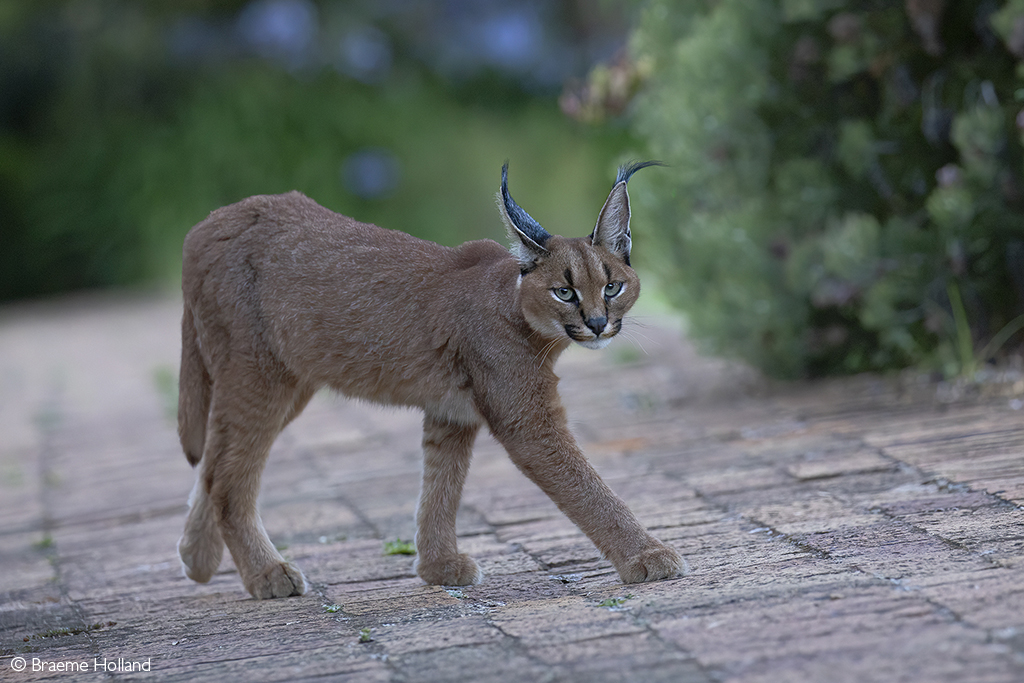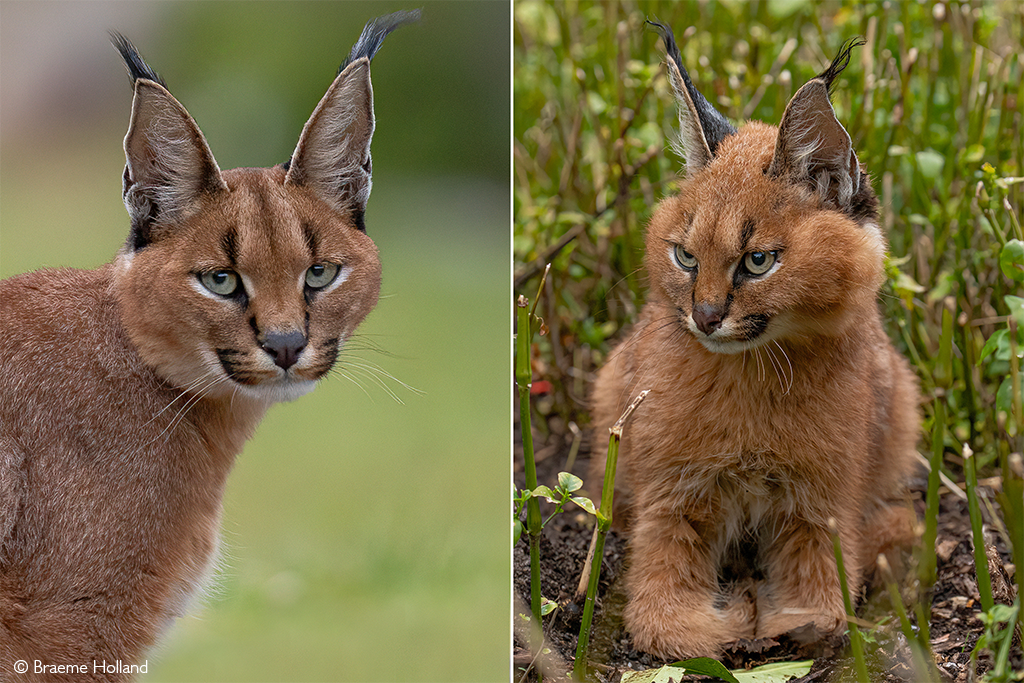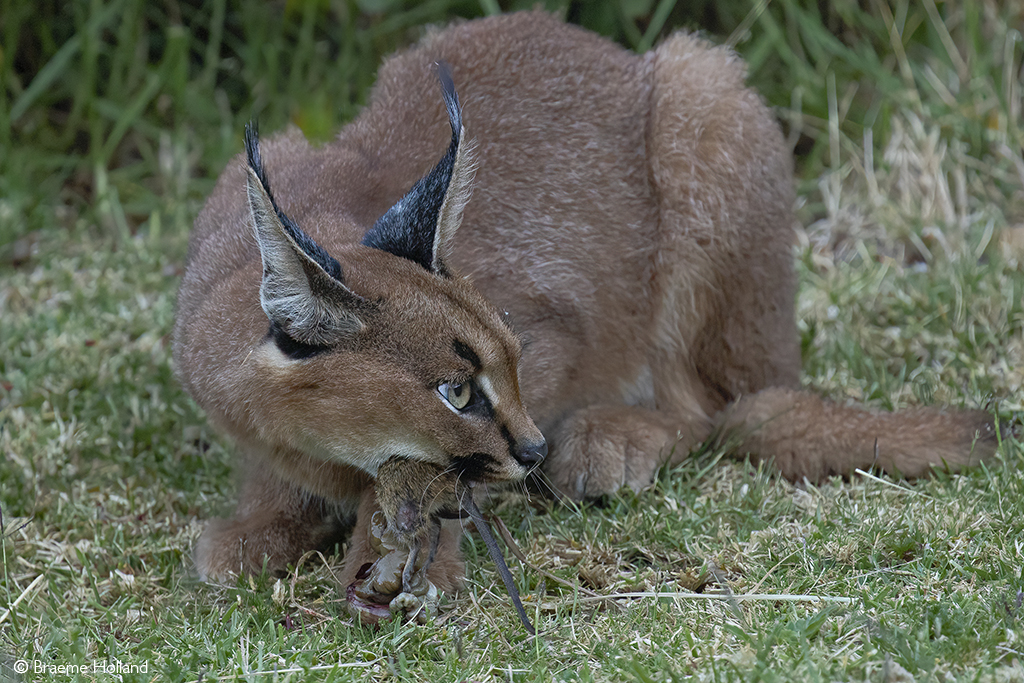
With the ever-expanding human population, wild animals across the globe have had to find a way to adapt to our presence. This means balancing the potential rewards (increased foraging opportunities) with the inevitable risks (such as conflict with people and domestic animals, and hazardous traffic). New research from the Urban Caracal Project examines how caracals navigate the dangers of city life in the Cape Peninsula. These highly adaptable mesocarnivores (mid-sized carnivores) are attracted to the interface of human development and wild spaces – at a significant potential cost.
To investigate how caracals adapt their behaviours, researchers from the project focused on the cats’ foraging-habitat selection across the Cape Peninsula – a section of Table Mountain National Park (TMNP) – in Cape Town. Previous research suggests that the Peninsula population numbers between 48 and 64 caracals, and the population is geographically isolated by the city of Cape Town. The borders of this region of TMNP are predominantly urban in the north, but become progressively less so to the south. The researchers divided the study region into the ‘urban region’ (north) and the ‘wildland region’ (south).

Between 2014 and 2016, 26 different caracals were captured and fitted with GPS collars. Over six months, the collars (designed to eventually fall off) provided regular updates on the caracals’ locations. The researchers combined this data with prey remains and scat analysis to examine how and where the caracals chose to hunt. They also looked at the behaviour at feeding “clusters” (where the GPS location data is clustered around a point over a specific period) to determine how the feeding caracals were behaving when in a “landscape of fear”.
The results show that caracals living in the urban region are drawn to the urban edge, foraging at the interface of the wilderness and human habitation where prey is abundant. In contrast, caracals that live in the wildland region avoid the urban edge. This selective behaviour indicates that caracals can become habituated to the presence of people and the various anthropogenic dangers. They become increasingly attracted to rewarding areas despite the risks. To mitigate the chances of being found, these “caracal urbanites” conceal themselves in surrounding vegetation and reduce their movement during times of high human activity, “hiding in plain sight”, rather than moving away.
So, is this attraction to city life a problem for caracals if they have learnt to mitigate the risks? Understanding the traits that allow caracals to persist outside of protected areas is important for designing effective conservation methods. Caracals on the fringes have learnt to trade off the increased resources with some serious risks. The dense road networks in and around cities are a significant cause of mesocarnivore mortality throughout the world, and this is particularly true for Cape Town’s caracals. In addition, exposure to things like rat poison and pesticides, as well as domestic animal diseases, remain a constant danger.

Behavioural plasticity – a change in behaviour resulting from exposure to stimuli – is essential, but if the costs of city life outweigh the benefits, this attraction to urban fringes could reduce population fitness. This is described as an “ecological trap” – the animals are repeatedly drawn to an attractive but harmful environment – and has the potential to lead to local extinction. Thus, even though the caracals may seem to have the city “all figured out”, the Urban Caracal Project is working on reducing some of the risks they will inevitably face. Some strategies include reducing pesticides, maintaining vegetative cover (especially in vineyards, which the caracals prefer) and traffic calming, particularly at popular crossing points.
Naturally, maintaining existing protected areas and increasing connectivity remains a priority.
Resources
The Urban Caracal Project operates in partnership with the Cape Leopard Trust. If you would like to learn more about their projects and research or potentially contribute to their vital work, you can do so here: The Cape Leopard Trust.
The full study can be accessed through a paywall here: “Hiding in plain sight: risk mitigation by a cryptic carnivore foraging at the urban edge”, Leighton, G. R. M., et al., 2021, Animal Conservation
To comment on this story: Login (or sign up) to our app here - it's a troll-free safe place 🙂.![]()







